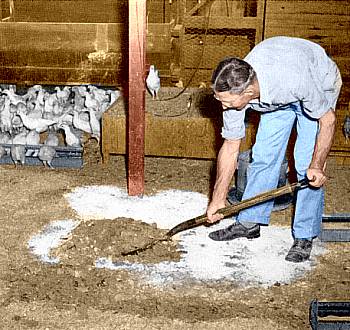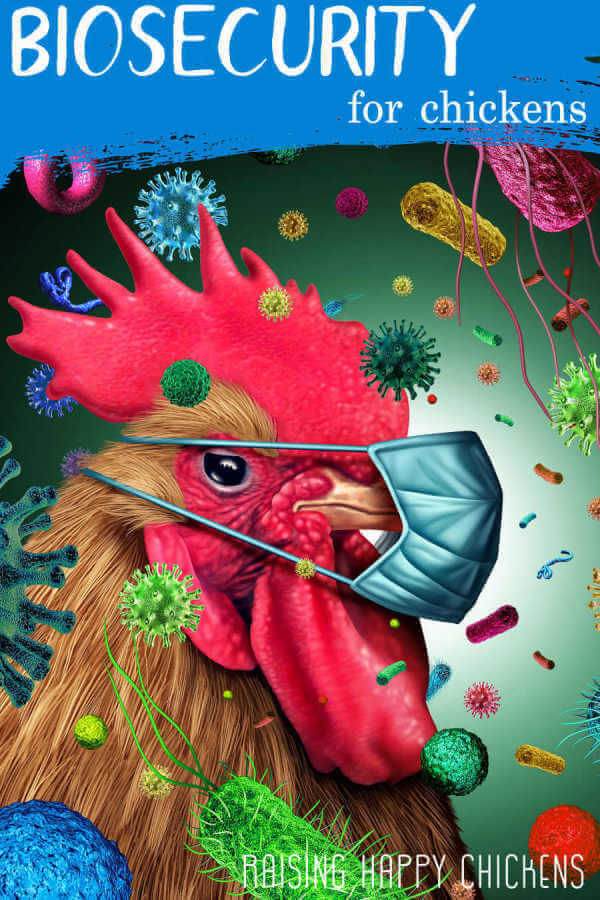Vandenberg
Well-known member
I keep pet show chickens and presently have an incubator full of Silkie chicken hatching eggs in three colors and I currently find myself obsessed with chickens and eggs for some reason. 
I now present for your perusal everything you possibly could want to know about:
Hens and Eggs
- Female chickens are called pullets for their first year or until they begin to lay eggs. For most breeds, around 20 weeks is a typical age for the first egg.
- Some breeds lay eggs daily, some every other day, some once or twice a week.
- Some individual hens never lay eggs, due to narrow pelvises or other anomalies.
- Normal laying routines can be interrupted by molting, winter daylight shortage, temperature extremes, illness, poor nutrition, stress, or lack of fresh water. Hens usually return to normal laying habits when the disruption-causing factor ends or is corrected.
- Most hens are productive layers for two years before declining in production, but some continue to lay eggs for several years.
- Hens will lay eggs whether or not they’ve ever seen a rooster. Roosters are necessary only for the fertilization of eggs.
Egg development and laying process

- A female chick is born with thousands of tiny ova, which are undeveloped yolks. Once she reaches maturity, an ovum will be released into a canal called the oviduct and begin its journey of development.
- At any given time a productive hen will have eggs of several stages within her reproductive system. The eggs most recently discharged from the ovary are just tiny yolks, and the eggs farther down the oviduct are progressively larger and more developed.
- From the time an ovum leaves the ovary, it takes approximately 25 hours for the egg to reach the vent for laying. During that time period, the yolk will grow larger while being surrounded by albumen (egg white), wrapped in a membrane, and encased in a shell. The pigment is deposited on the shell as the last step of the egg production process.
- If sperm is present, the yolk will be fertilized before the albumen is deposited.
- As a chick embryo develops in a fertilized egg, the yolk provides nourishment, and the albumen cushions the embryo.
- Although a hen has only one exterior opening (the cloaca or vent) for egg laying and elimination, eggs are not contaminated during the laying process. Two separate channels, the oviduct, and the large intestine open into the cloaca. As the egg nears the end of the oviduct, the intestinal opening is temporarily blocked off. The egg passes through the cloaca without contact with waste matter.
- The typical interval between eggs laid is about 25 hours, so a hen that lays an egg every day will lay a bit later each day.
- Hens don’t usually lay eggs in the dark, so once a hen’s laying cycle reaches dusk time, she will usually not lay till the following morning.
- Eggshell production drains calcium from the hen’s body. The comb, wattles, legs, and ear lobes will fade as the calcium leaches out. Calcium must be replenished through either feed containing calcium, supplements such as oyster shells, or high amounts of calcium in the soil of birds with outdoor access.
Egg Variations

- Young pullets often lay malformed eggs before getting established in a normal laying routine. Older hens may occasionally lay abnormal eggs due to age, stress, or illness.
- The first eggs produced by each pullet are smaller than the eggs that the same hen will produce as an older hen.
- “Fart egg” and “oops egg” are terms for tiny eggs that quickly pass through the oviduct without reaching full size.
- Shell-less eggs are released before they have time to develop a shell. They may have membranes holding them together or just loose yolk and white.
- Double eggs or “egg in an egg” are created when an egg with a shell is encased by the next egg in the oviduct and a shell is produced over the outer egg as well.
- Double yolkers may have a normal amount of egg white with two or more yolks. In the shell, the egg may be unusually large.
- Yolkless eggs, also called no-yolkers, dwarf eggs, or wind eggs, consist of egg white alone.
- Occasionally an egg will come out with a wrinkly, misshapen, rough, bumpy, or unusually colored shell.
- Egg size is dependent on breed, age, and weight of the hen. Larger chicken breeds tend to lay larger eggs; banty breeds lay small eggs. Older hens tend to lay larger eggs than younger hens.
- The shell color is a breed characteristic. Most chicken breeds lay light-to-medium brown eggs. A few breeds lay white, dark brown, green, blue, or cream-colored eggs.
- Shell color is only “skin deep”-- the eggs inside are the same as eggs of other colors.
- The shell color intensity of eggs laid by one hen can vary from time to time, with an occasional darker or lighter eggshell.
- While most eggs have a slight sheen to the shell, some breeds or individual hens tend to lay eggs with a chalkier texture
Chicken And Egg Behavior

- Most hens will lay eggs in the same nest box as flockmates, so it’s not necessary to have a nest box for each hen.
- Some hens like to lay their eggs in private, and others join their sisters in the nest box. Often two or three hens will crowd into one box while another nest box remains empty.
- Sometimes a hen will sit on previously laid eggs and add her egg to the clutch. Another might prefer to sit in another area and deposit one egg by itself.
- Often a hen will sing “the egg song” before or after she lays an egg. Some will sing during the process of laying. It is a cheerful song that seems to be a proud announcement.
- Chickens learn by example, so a fake or real egg left in a designated nest box may encourage hens to lay there instead of on the floor or outdoors.
- Unconfined hens may lay eggs anywhere outdoors if they don’t want to return to the nest box. Sometimes a free-ranging hen will go missing and reappear weeks later with a parade of chicks.
- Chickens like to eat eggs, even their own. An egg that gets accidentally broken will likely be eaten by one of the chickens. If you occasionally find pieces of shell or egg yolk in the nest box, it’s usually nothing to be concerned about.
- Some chickens become habitual egg-eaters that break eggs open and eat them. An egg-eater should be culled from the flock if you wish to have eggs for the kitchen. Not only will that chicken continue to eat eggs, but others will learn from watching and you may end up with several egg-eaters.
- Holes in eggs and cracked eggs do not necessarily mean there is an egg-eater in the flock. A hen can accidentally crack an egg in the nest when she sits down or adjusts the nest to lay her own egg. Sometimes curiosity or boredom leads a chicken to peck at an egg without the intention of eating it.
- Chickens can be fed their own or other eggs either raw or cooked. Eggs provide protein and the calcium in the shell is beneficial for laying hens. A potato masher can be used to break boiled eggs into pieces of egg and shell.
- Empty eggshells from the kitchen can be fed back to chickens as a calcium supplement without concern for developing egg-eaters. However, to be safe, crushing the shells or running through a blender is a good idea.
Chicken birds and bees
- The only reason a rooster would be required with a flock of hens is to fertilize eggs. As a side job, a good rooster also serves as a watchman, warning his hens of predators and other dangers. He also seeks out food for his harem.
- Even with a virile rooster in residence, not all eggs will be fertile. Some hens just don’t interest a rooster and others never get caught. Often, roosters will have favorite hens that get most of their attention and others remain unnoticed.
- Hens do not have an estrus cycle. They can mate and develop fertile eggs at any time.
- Sperm can remain viable in the hen’s oviduct for three to four weeks, so one mating will fertilize numerous eggs.
Brooding and hatching

- A broody hen of any breed can be used to hatch eggs and raise chicks from other hens of any breed.
- A broody will sit on any eggs, whether or not they are fertile and regardless of who laid them. To gather a suitable clutch of eggs, she will not only lay her own eggs but may roll other hens’ eggs into her nest.
- While a hen is brooding, you can remove daily any extra eggs she gathers into her clutch. Drawing pencil “equator” lines around the eggs you want her to brood will help with identification.
- A setting hen will usually leave the nest at least once a day to eat, drink, and defecate. The eggs are not in danger of cooling off too much during a normal foray into the coop or run.
- Typically, chicken eggs hatch about 21 days from the beginning of incubation or nesting by a broody hen. A few days early or late is not unusual, and some breeds lean toward earlier or later hatches.
- Not all fertile eggs will develop into embryos. Some never develop due to egg deficiencies or temperature fluctuations.
- Not all chick embryos will successfully hatch. They can die any time before hatching, even after pipping a hole in the egg. Double yolk eggs rarely hatch due to crowding during embryo development.
- If a broody hen has pushed an egg out of the nest, she probably knows something is not right with that egg or embryo.
In the kitchen

- A normal fresh egg has a yellow yolk, a layer of thick albumen (egg white) surrounding the yolk, and a thinner layer of albumen surrounding that.
- At opposite sides of the yolk are two chalazae, short white twisted strands of albumen that anchor the yolk to the white. A large chalaza does not indicate embryo development.
- Every egg yolk has a white disc called a blastoderm. It is usually visible but may be very pale. In an infertile egg, the blastoderm is solid white. The disc has a faint or distinct ring in a fertile egg that makes it look like a donut or bulls-eye.
- Fertile eggs are completely edible. In fact, some people consider fertile eggs more nutritious than infertile eggs, but scientific research does not confirm this.
- Fresh fertile eggs collected daily will not have embryos in them. Embryos do not begin to develop unless the eggs are in a favorable warm environment under a broody hen or an artificial incubator.
- The yolk of a chicken egg may be any shade from pale yellow to orange, depending on what the hen has eaten. The color is usually consistent if hens are fed only one type of feed, but foraging hens and those fed kitchen scraps will often produce a variety of yolk colors.
- The egg yolk or egg white may have red or brown specks in it. These “blood spots” and “meat spots” are harmless bits of tissue and are allowed in commercial Grade B eggs. If they look unappealing, the spots can be removed with a spoon or knife before cooking.
- An eggshell has a protective coating that prevents bacteria from entering the egg. To retain this coating, eggs should not be washed until just before use.
- Some eggs are soiled with blood from minor tissue damage or mud or feces from the nest box. This can be wiped off carefully; the shell should be thoroughly dried.
- Checking for egg freshness? If you aren’t sure how old an egg is, you can submerge it in water. The freshest eggs will remain at the bottom of the container, while old eggs will float. Floaters should either be discarded or opened far from your nose.
Last edited:







 feathers are just specialized scales. my buddies chickens have finally started laying. he told me today that out of the first dozen eggs he got, 9 of them were double yolks. i told him they were making up for lost time...
feathers are just specialized scales. my buddies chickens have finally started laying. he told me today that out of the first dozen eggs he got, 9 of them were double yolks. i told him they were making up for lost time...
